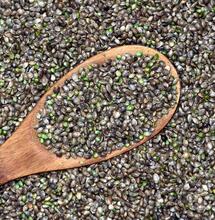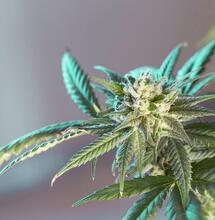Concentrating upon Concentrates

Although traditionally the most common form of consumed Cannabis is dried flowers (buds), many vipers today prefer a more concentrated form.
Although traditionally the most common form of consumed Cannabis is dried flowers (buds), many vipers today prefer a more concentrated form.
|
A hot nail is used to vaporize the BHO for inhalation |
For some old timers, such as myself, 'getting high' evokes an image of smoking a joint by the river, or passing a pipe around a circle of friends, repeated as needed until the smoker gets 'there'. Not so for many of today's hipper, slicker, faster-paced, more objective-oriented crowd, where concentrates are king, and a little 'dab' will do you.
Concentrates such as hash were originally developed for ease in smuggling, much like orange juice concentrates were developed for ease in shipping. The cannabinoids (THC, CBD etc.) that cause the desired effects are located mostly in the trichomes, with few active ingredients in the rest of the plant material. Concentrating methods generally involve either separating the trichomes from the more inert plant material, or dissolving the active ingredients into a solvent as a carrier for separation. Decarboxylation rules still apply, so if heat is not part of the process, the material should be heated prior to or as part of consumption.
Kief powder is simply a pile of trichomes that has been physically removed from the plant material. There are a variety of mechanical methods used to create kief; two of the most common are rubbing dried material against a fine screen or suspending ground-up plant matter in cold water and filtering the sediment. The quality of the kief powder produced depends upon the details of the method used. A greenish tint implies impurities, indicating the presence of chlorophyll from plant matter.
The large surface area of the powder makes it particularly well-suited for low temperature vaporization.
Hash is made from kief by warming and compressing the powder into a solid mass. This reduces the surface area for combustion, and reduces the risk of spillage during transport.
As an alternative to mechanical separation, it is also possible to dissolve the active ingredients into a solvent, such as fats, alcohol, glycerin, butane, ether or carbon dioxide.
Butter, oils and other cooking fats are often used as a solvent in cooking with Cannabis. An excess of the plant material can often add an unwelcome flavor to the dish. To avoid introducing an overwhelming Cannabis flavor, the active ingredients are first dissolved into a fat or oil and strained, the result of which is then used for cooking. As an alternative, either kief or tincture is used in some recipes.
Tinctures are formed when alcohol or glycerin is used as the solvent. The solvent is not removed, so the end product remains a liquid.
'Honey oil' is made when alcohol is used as the solvent, and then much of the alcohol is removed using heat and evaporation, making the concentrate thicker.
|
BHO concentrate, ready for dabbing |
'Butane honey oil' (BHO) is made with butane as the solvent, and the end product may appear as either a waxy semi-solid, a buttery semi-solid or a semi-transparent, hard solid. BHO is often described by the appearance of the end result, such as 'wax', 'budder' or 'shatter'. Other chemical solvents used in a similar fashion will produce comparable results.
My advice - and this should go without saying but, unfortunately, my observations around the country have convinced me that some folks need for it to be said - is: "Be careful and start off slowly" when trying out new concentrates. While most folks have enough sense to stop when they have smoked sufficient joints, I have seen far too many people get carried away when consuming concentrates and overdo it before they realize their error. As the Greeks used to say: "In all things, moderation."
Peace, love and puka shells,
Grubbycup



